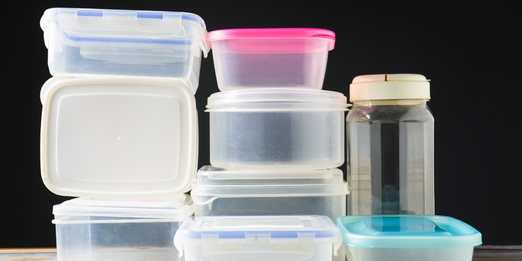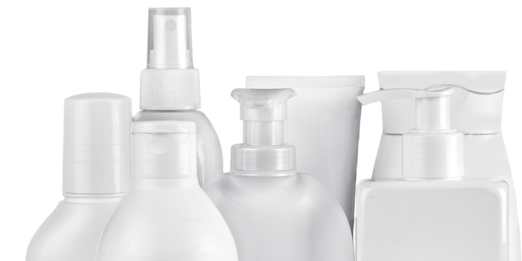Best Plastic Alternatives for the Packaging

It is very well-known fact that plastic is one of the most used packaging materials. With an ever-growing population and fast-changing lifestyle, the need for packaging continues to go grow, and so is the use of plastics. Plastics are the most versatile, economic, and scalable material that can take different forms and shapes easily.
However, plastic is one of the major causes of environmental pollution threatening life on land and the ocean. When plastics are used for packaging, there are two key concerns – they are made from fossil resources with high carbon emissions and their recycling value is insignificant leading them to landfill and oceans.
While looking for alternatives to plastic, the two key concerns must be addressed taking the complete packaging lifecycle into account without compromising the functionality of the packaging.
There are three broad classifications of packaging, and each of them needs to be treated differently while looking for plastic alternatives.
Before looking at alternatives to single-use packaging items, it is important to check if there are changes to lifestyle and business models that eliminate the very need for single-use packaging items. For example, takeaway cups and shampoo sachets can be replaced with reusable and refillable solutions.
1. Alternatives for flexible packaging

Most of the flexible packaging is single-use items such as bags, films, and foils. The purpose of flexible packaging is to protect perishable goods that include food, medicine, and vegetables, and non-perishable goods such as toys, home appliances, etc.
Because of the versatility, scalability, and economic aspects, replacing plastics with flexible packaging is one of the most difficult tasks.
Segregating and recycling flexible single-use packaging items is very difficult and due to high levels of contamination of the packaging items, they end up in a landfill. The ideal situation is to convert all flexible single-use packaging items into reusable and refillable solutions. Otherwise, the materials used should support recycling and should degrade naturally in soil and compost.
If the packaging needs cannot be changed from single-use items to reusable or refillable, there are only two alternative options to plastic.
a. Biodegradable bioplastics are made from sustainably sourced renewable materials.
b. Paper that is made from sustainably sourced renewable or recovered materials
While bioplastics offer the most seamless replacement for plastics, their price is significantly higher making it difficult for mass adoption. Many bioplastics are currently made from renewable resources that compete with the human food chain and hence making them unsustainable. It is important to ensure that the renewable raw material used for making bioplastics is sustainably sourced.
Paper can be used as an alternative to plastic flexible packaging with limitations. Paper cannot be used for preventing the degradation and contamination of perishable goods. They are suitable to pack and protect products that are dry only. If the paper is made from sustainable raw materials, without resulting in deforestation, it can be a good alternative to flexible plastic items.
2. Alternatives for semi-flexible packaging

Many of the semi-flexible packaging items are used for products such as cleaning liquid, shampoo, oil, water, etc. The purpose of semi-flexible packaging is to protect goods from external damage during transport and to increase the shelf-life of the goods.
Plastics absorb the impact of blows and drops very well and are hence much suited for semi-flexible packaging. They also provide good insulation properties that extend the life of products packed.
Recycling of semi-flexible packaging items is relatively better than flexible packaging items as it is relatively easier to segregate them and recycle them with better economic value. While looking for alternatives to plastic for semi-flexible packaging, we should consider only recyclable materials.
For applications where semi-flexible packaging cannot be replaced with reusable and refillable ones, the following are the best options.
a. Recyclable bioplastics are made from sustainably sourced renewable materials.
b. Aluminum is preferably made from recycled sources.
c. Pulp-based products made from sugarcane/bagasse, recycled wood & paper, etc.
Preference to be given to bioplastics that are recyclable instead of biodegradable as the overall carbon footprint of the complete product lifecycle will be much better.
Aluminum is lightweight, has good properties to absorb impact, is highly scalable, and can be recycled infinitely resulting in an overall lower carbon footprint.
Pulp extracted from sugarcane/bagasse, wood, and paper can be compressed into different shapes that can be suitable for semi-flexible packaging. They are more suitable for packaging products that are dry
3. Alternatives for rigid packaging

Rigid packaging is one of the common uses of plastics where they are used to store high-value goods to increase shelf life and protect them from external damage.
Plastic is preferred over other materials for making rigid packaging due to its aesthetic benefit, lower cost, and scalability. There are many plastic alternatives to rigid packaging, and it is relatively easier to replace plastics.
With very few exceptions, rigid packaging items are usually recycled at the end of their use, and hence it is better to look for alternatives that can be recycled to support circularity principles.
There are many alternatives to plastics for rigid packaging needs.
a. Recyclable bioplastics are made from sustainably sourced renewable materials.
b. Aluminum is preferably made from recycled sources.
c. Wood & bamboo from sustainable sources without resulting in deforestation.
d. Glass that is preferably made from recycled sources.
The benefits of using recyclable bioplastics and aluminium for rigid items are like that for semi-flexible packaging.
Bamboo and wood are widely accepted by consumers as sustainable choices. It is important to ensure that the wood and bamboo are sourced sustainably without resulting in deforestation.
Glass has been used for many years and it can be recycled many times without deterioration of its properties. Although they have many disadvantages over plastics, they are still one of the best choices if the packaging can be reused and recovered after use.
The choice of sustainable plastic alternatives to packaging needs must be made after careful consideration of social, ecological, and economic impact across the product lifecycle. Ensuring the resources used in making the items support circular design is fundamental to making the right choice.
At Mynusco, we make biocomposite materials from renewable and recovered materials that are suitable for packaging needs and support circular principles across the product lifecycle.






